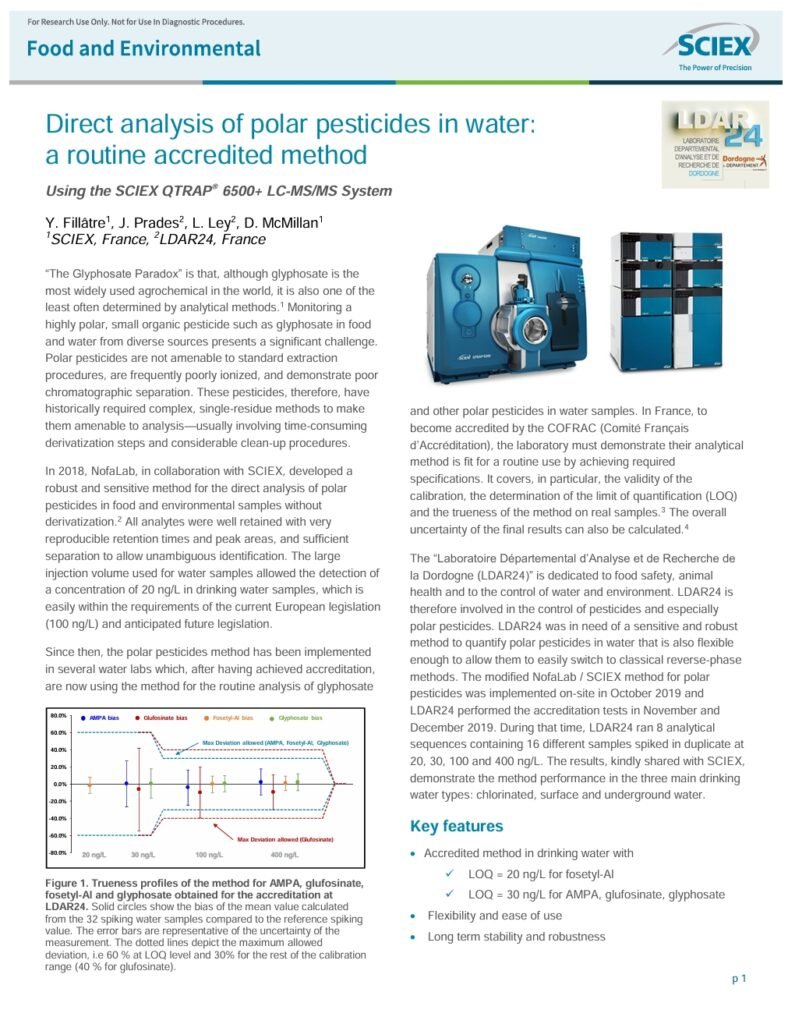Direct analysis of polar pesticides in water : a routine accredited method

Direct analysis of polar pesticides in water : a routine accredited method

“The Glyphosate Paradox” is that, although glyphosate is the most widely used agrochemical in the world, it is also one of the least often determined by analytical methods.1 Monitoring a highly polar, small organic pesticide such as glyphosate in food and water from diverse sources presents a significant challenge. Polar pesticides are not amenable to standard extraction procedures, are frequently poorly ionized, and demonstrate poor chromatographic separation. These pesticides, therefore, have historically required complex, single-residue methods to make them amenable to analysis—usually involving time-consuming derivatization steps and considerable clean-up procedures.

